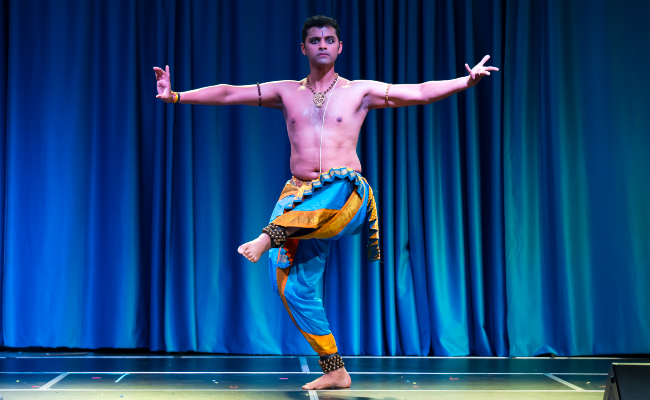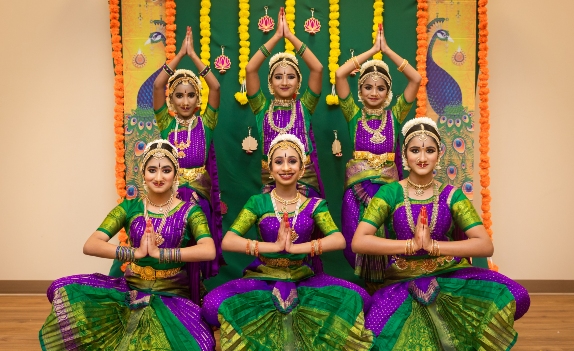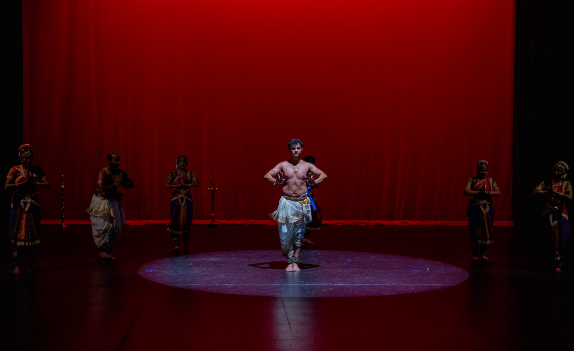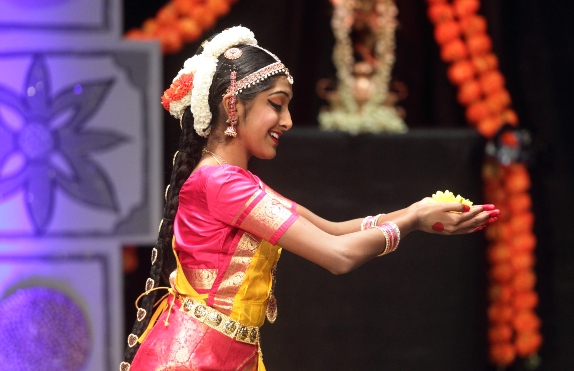About Bharatanatyam

Dating from around 500 BC, Bharatanatyam is a classical dance form that originated in the state of Tamil Nadu in South India. The principles of Bharatanatyam are derived from the Natyasastra, an ancient Sanskrit treatise. It is said that it was written by Sage Bharata in the second century BC. Bharatanatyam was performed by the original dancers the devadasis, or ‘handmaidens of God’, who dedicated their lives to dancing before deities in the temples. These talented artistes and their male gurus (nattuvanars) carried the torch of this art down the centuries. However, the colonization of India saw a sea change in the country's social values. The Victorian values of the British gained the upper hand and the devdasis lost the patronage of the court. As a result, there was a danger that this wonderful dance form would be lost to modern India.

The 1930s saw a movement to revive this dance form when a renewal of interest in India's cultural heritage prompted the educated elite to rediscover its beauty. The present form of Bharatanatyam as we know it has been codified and documented in the early 19th century by four brothers - Chinnayya, Ponnayya, Vadivelu and Sivanandam - who were also known as the Tanjore Quartet. Their dance compositions form the bulk of the Bharatanatyam repertoire even today.

Technique: Recognized for its dynamic rhythm and rich vocabulary of expressive gestures, Bharatanatyam’s hallmarks are crisp geometrical movements, sculpturesque poses and stylized expressions. Bharatanatyam is characterized by its demi-plié-like stance, complexity of rhythmic footwork and delicate facial expressions. Visually, it is a dynamic, earthly and precise style of dance with a distinct linear quality.

Thanjai Style of Bharatanatyam: Although there are several styles of Bharatanatyam, Rama learnt and teaches the Thanjai style of Bharatanatyam, which is the most original style of this art form.The vintage ‘Pandanallur / Tanjore’ style of Bharatanatyam emphasizes the mastery of tempo, precision of technique, subtle expression, and dexterity in execution. This style is known for its understated and clean geometric lines, its variety of ‘Adavus’ (steps), and for its languorous movements. The abundance of technical richness in the imaginative ways of using a particular ‘Adavu’ without sacrificing the classicism is another notable factor. One of the special features of the style as passed on by the great masters, is the execution of ‘Jatis’ (rhythmic sequences) and ‘Jati Korvais’ (segments of rhythmic sequences) in ‘Vilambita Kala’ (slow tempo) with controlled speed and clarity. An understanding of the ‘Kalaparamana’ (time cycles, cross rhythms, and pauses) in ‘Vilambita’ (slow), ‘Madhyama’ (medium), and ‘Druta’ (fast) tempos are stressed.
